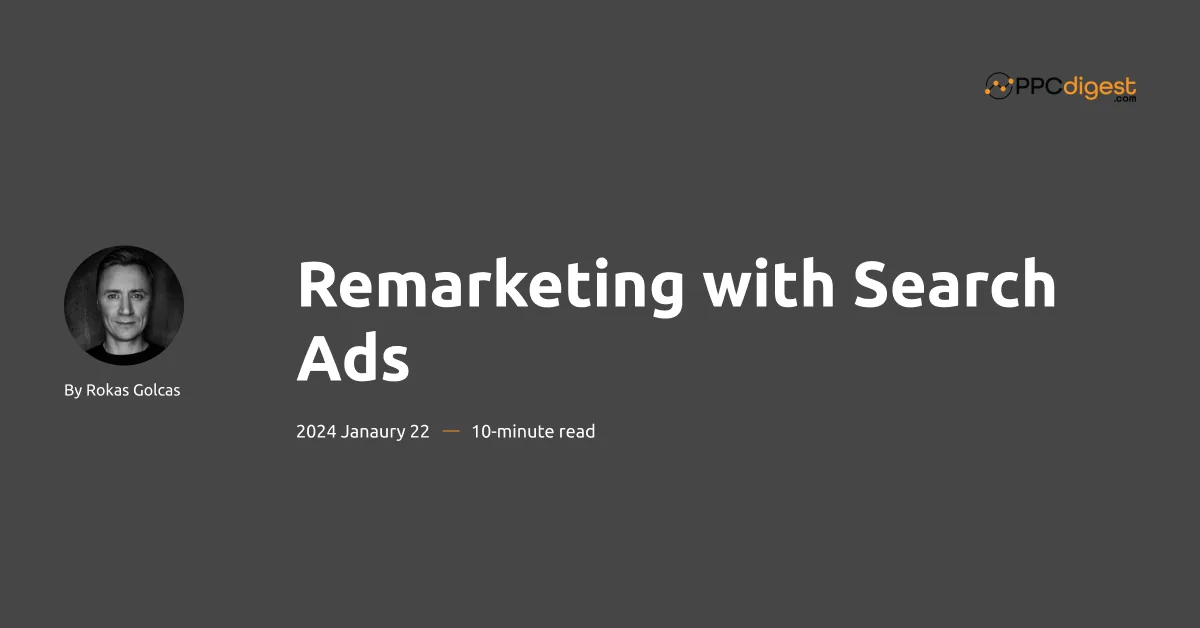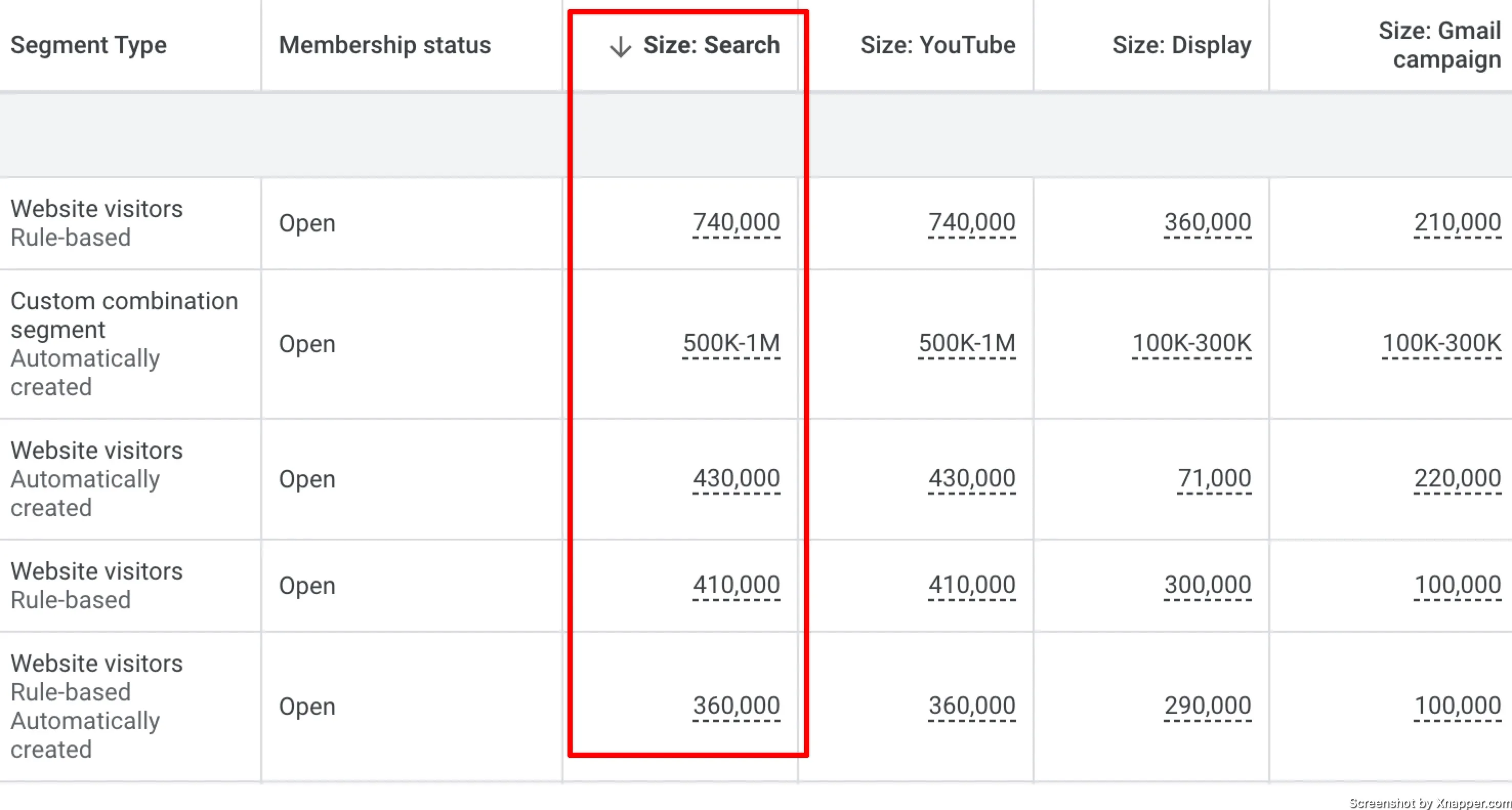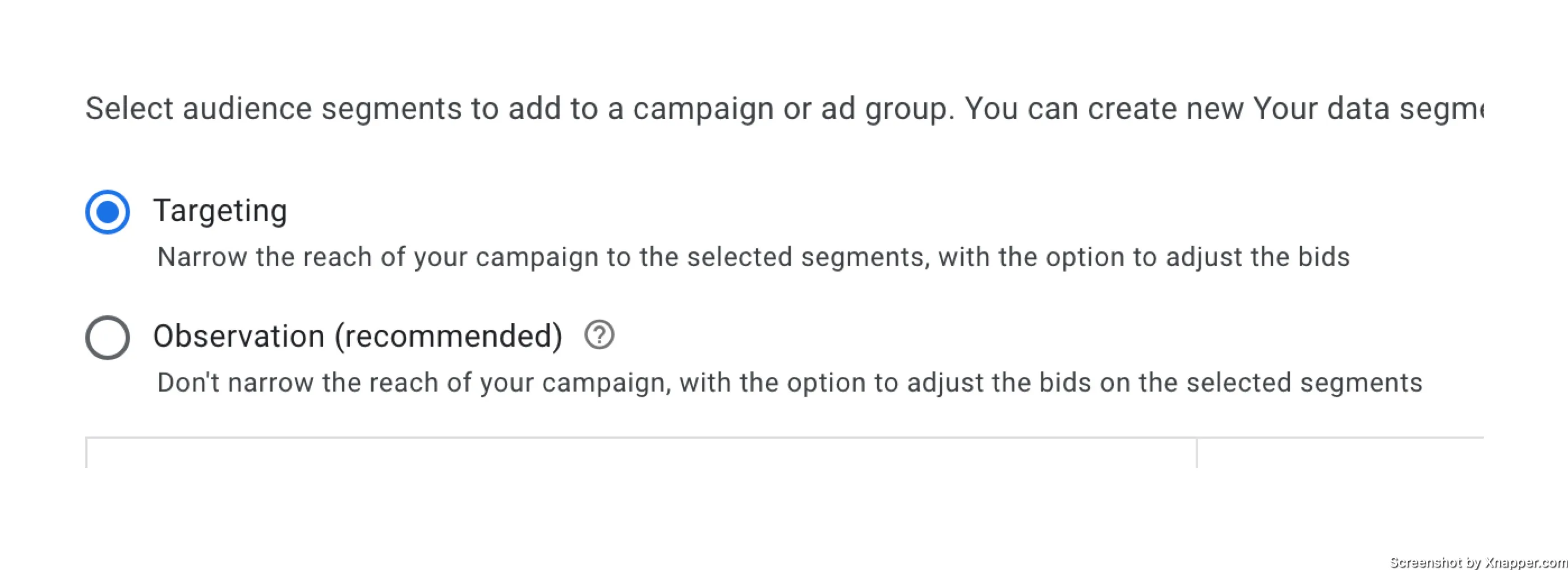
If you haven’t heard about Remarketing for Search Ads, commonly known as RLSAs (Remarketing Lists for Search Ads), you’re in for a big surprise. If you have, then kudos to you.
RLSAs are a great way not only to optimize but also efficiently scale your Search campaigns. I will share a few strategies that helped me in the past.
What is retargeting in Search ads?
Retargeting in Search Ads is a strategy that helps you reconnect with people who’ve interacted with your website or app but didn’t take the desired action, like making a purchase or filling out a form.
Most visitors don’t convert on their first visit. Without retargeting, you’re leaving money on the table by letting those potential customers slip away.
It is different from your regular display remarketing, because your ads do not follow users across other websites. This is Search Ads.
But they can be very effective in several ways.
Search ad retargeting, often called RLSA (Remarketing Lists for Search Ads), uses remarketing lists to show ads specifically to past website visitors when they search for relevant keywords on Google. For example, if someone visited your site but didn’t buy, you can bid higher to show your ad when they search again later.
How to set it up?
RLSAs use the same lists you create for your display remarketing campaigns. There is no need to do anything else. Just go to Tools >Shared Library>Audience Manager.
Look at your lists, and you will notice that there is a Search column with an audience size. This is how you know if that audience is eligible for remarketing on Search and also know the size of this list.

After you have an audience, just go to your Search campaign and add this audience as targeting and not observation.

That’s it. Now you have Search Ads that run only for your specified audience.
💡 Note that in order to see great results, or at all any results, you will need a large audience. I would say a minimum of 50k. It will depend on the country, of course. But with a small list, you won’t get as many searches as you think, and your campaigns will be stale.
With display remarketing you can get results even with 1000 users. So that’s also one of the differences.
Why you would use it?
Now, the most interesting part – why would you use it? I will list some of the things I tried, and they work great. I’m sure you might come up with one or two on your own.
Small heads up here. I’m talking about just returning users, not returning purchasers (customers). Excluding or including past purchasers is another strategy. Obviously returning users list will also include purchasers as they have been on the website.
New vs Returning
No matter what business you have, there will always be new customers and returning. If you have a larger account, sometimes it is beneficial to separate these two segments. Have one Search campaign only for New users, and the other for Returning.
Of course, this means having two campaigns. And if you’re on an automated bidding strategy, that might be the best idea. Here’s why:
- Google algorithms (at least in theory) account for users behavior. Which means they now who is returning or new and can adjust accordingly
- Splitting the campaign in two, you will split the number of conversions, and that might affect the algorithm.
However, sometimes you need more control over costs. Relying on Google Algorithms doesn’t help in all cases. With enough conversions, you can still use smart bidding. But now you can adjust them for these two segments.
The biggest benefit is that your CPA for remarketing will be lower, and you can increase the budget to get more impression share. Or you can just have a better ROI.
And for the campaign, which is only for new users, you might see a higher CPA, but now you can control it a lot better. You may reduce the CPA, reduce the budget, or even check if there are keywords that are now even more expensive than before.
Remember, sometimes averages hide great insights, that’s why it is worth having separate campaigns for new and returning users. To avoid a big bucket of average values.
Non-converting keywords
This is one of my favorites. We all have keywords that we tested, but they did not convert at all, or they converted at a higher CPA. Which was not acceptable to us and we just paused those keywords.
However, you can create a separate campaign with just these non-converting keywords and only use RLSAs. Sometimes, you might find that they start to show better results because the audience is now limited. It’s not cold anymore.
This is great to get extra conversions without inflating the spend too much.
Testing New keywords
Similar to the above, you can test new keywords with RLSA first. The idea behind this is that you’re testing on a warmer audience, which usually has lower CPC, better CTR, and lower CPA.
This works even better in the competitive niche. You can test expensive keywords with a smaller budget.
Don’t forget that people who have been on your website already have seen your brand and your offering, and they might have engaged with your other ads, be it Google or Meta. If you can’t get them to convert, then what are the chances the new audience will convert?
Obviously, this is an assumption you need to test. But at least from my experience, returning users converted better. So it helped me to scale having a better ROI.
💡 Returning users are not always “better”, than new. It all depends on your business.
Excluding returning
You can also just exclude all your returning users. Since you can create lists that are up to 540 days, that is a lot of users. You can play around with the list duration as well.
You might be wondering why I should exclude users at all. Well, some businesses rely heavily on email marketing to communicate with users. For example, if the business has an easy signup ( Free trial etc.), then they would use email and other notifications to communicate (sell, engage) with the user.
Ads become just the initial acquisition, and that’s it. So, there is no reason to show ads to returning users, as they either signed up or won’t do it.
You can also exclude only those who signed up, limiting the audience.
Another way to save a dime is to exclude all returning for Brand campaigns. People already know the brand and have been on your website already. You may leave it only for those who haven’t been on the site.
💡 This is risky, however. Think carefully about what you are excluding and how this might impact your performance. This might work if you want to optimize your costs, but not much if you want to scale.
Remarketing more “valued” users
Depending on the website, users might perform several actions. You can use those actions to bid more aggressively. For example, if you have an e-commerce site, you might want to create an audience of all people who use search on your site. These are more engaged users.
This is similar to display remarketing. You take an action, exclude all purchasers, and then retarget them on Search. People google the same keywords several times, and in a competitive niche, it can become expensive.
Having a separate campaign for engaged users might lower your cost and reduce CPA.
You can also include micro conversions into this as well. Those are also valuable actions, and if your audience is large, I bet the CPA will be a lot lower for these users.
Don’t forget ads
Another amazing benefit of RLSAs is that you can also create different ads for those users. You can personalize ads since they already saw your website, products, services, etc.
Don’t just run the same ads. That would be a mistake. You need to reengage them or maybe eve offer something else.
This also extends to landing pages. I know it’s hard enough to have dedicated landing pages for Search campaigns, and now even more for RLSAs. But this is a great opportunity to convert those who left your website.
Sometimes, the same offer is fine. Other times, you need to change it because whatever you had originally did not work for them.
Don’t waste your second chance as well.

Blogging gives me a chance to share my extensive experience with Google Ads. I hope you will find my posts useful. I try to write once a week, and you’re welcome to join my newsletter. Or we can connect on LinkedIn.